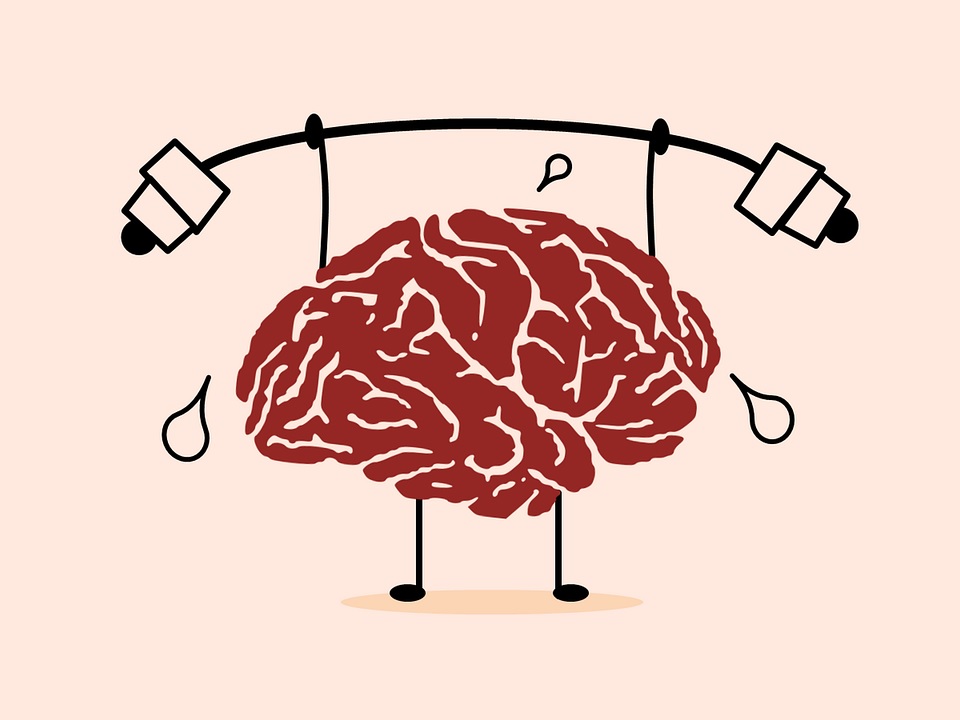
By Rachel Ellen Green, CPT
Want to improve your memory in today’s Global Pandemic Environment? Start exercising! When evaluating exercise, we tend to focus on the physical benefits, but disregard the mental benefits. Current research has proven that consistent exercise has a wide range of benefits in enhancing brain function. With the global pandemic, your movement has likely been limited to your home. Spending too much time inside can make you feel sluggish and unmotivated. In addition, it can hinder your ability to focus. You can change that through exercise.
Exercise improves your mood, memory, cognition, learning ability, regulates sleep, and reduces stress. Just 15 minutes of moderate intensity exercise significantly improves short-term memory function. Exercise increases blood flow to the brain which promotes the creation of new brain cells and neurotransmitters, like serotonin – the feel-good chemical. Endorphins are also released during exercise. Endorphins are essentially pain-killers that can diminish feelings of stress, anxiety, depression, and boost self-esteem. Higher stress levels are associated with slower information processing, decreased learning ability, and poor working memory.
Physical activity includes a wide variety of activities. If you’re unsure where to begin, start by incorporating daily walks, ride a bike, or try a group fitness class. If you’re already fairly active, try mixing up your exercise routine. Both single and repeated sessions of physical activity are proven to have numerous benefits on cognition. Variability in your training routine is key to optimal physical and mental development. You can try increasing or changing up your strength training routine or try a new form of exercise. There are plenty of ways you can increase your physical activity and boost your brain function.
In addition, incorporate strength (or weight) training into your daily exercise routine. New research has proven strength training to have greater benefits on cognitive function over aerobic exercise. In a 2016 study, 2-3 strength training sessions a week dramatically improved cognitive function, slowed cognitive decline and the onset of neurodegenerative disease with age. You should consider implementing a strength training regimen in to your weekly routine.
Here are some strength training exercises that can help build strength and improve cognitive function.
Wall Slides
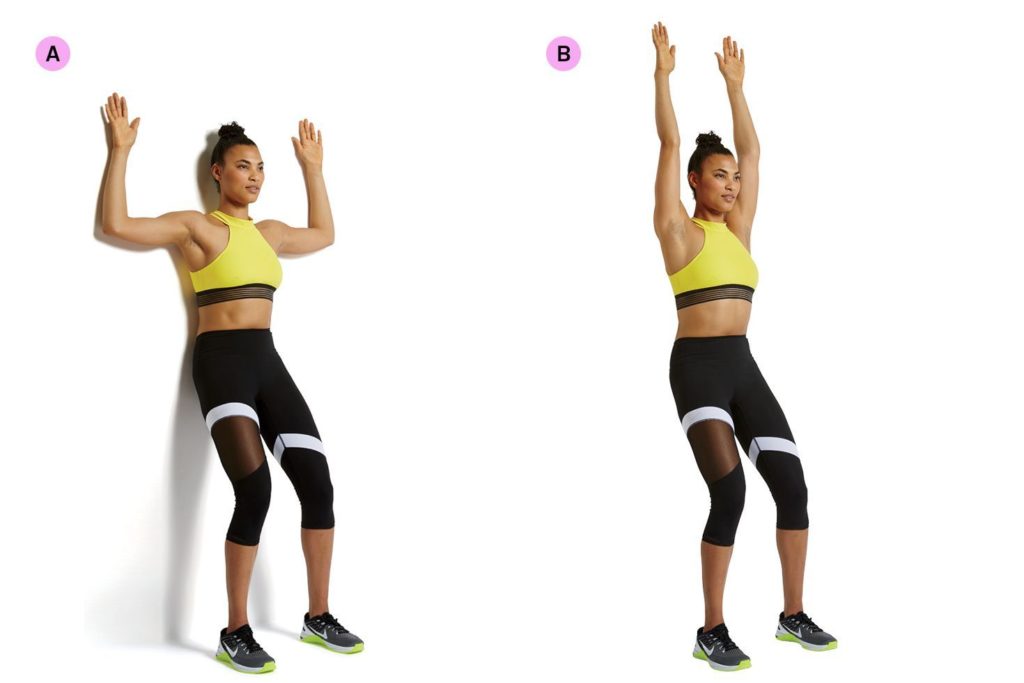
Wall slides work the postural muscles in the upper back and shoulders. This is a great exercise if you have constant neck pain, rounded shoulders, or tightness from sitting over a computer all day. Here are the steps-by-step instructions from Very Well Fit:
- Stand upright with your back against a wall and your feet shoulder-width apart.
- Bring your arms up, pressing your shoulder blades into the wall. The backs of your hands will be against the wall with your thumbs at about the height of your head. The line of your upper arm, from your elbow to shoulder, should be perpendicular to the floor.
- Inhale. Slowly bend your knees and slide your back down the wall until your knees are bent at a 45-degree angle (bending more than this will place increased strain on your knees). As you bend your knees, straighten your elbows until your arms are extended straight up over your head, but still against the wall.
- Hold this position for 5 seconds.
- Exhale as you straighten your knees to slide back up the wall until you are fully upright with knees straight and elbows bent back to their starting position.
Lateral Lunge
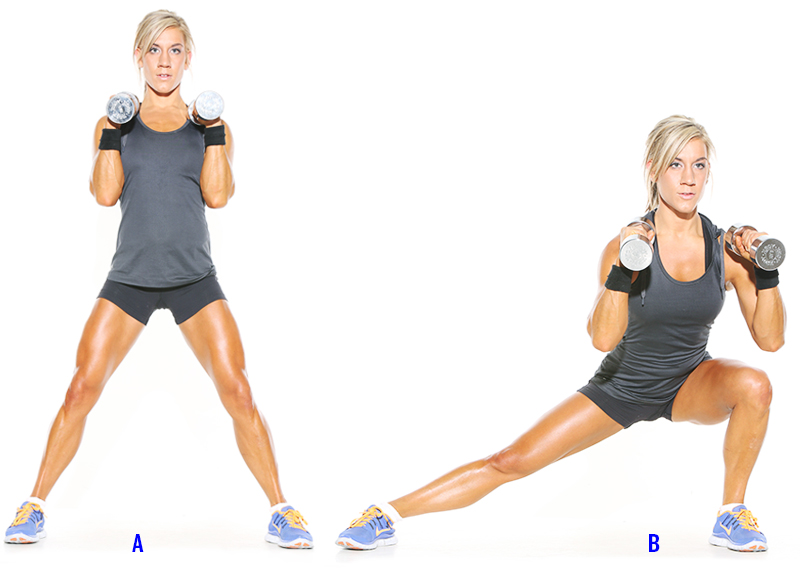
When creating an exercise program, people often neglect sideways movement. The lateral lunge is great way to move through the frontal plane (side to side) while working the glutes, quads, and hamstrings. To make this more difficult add speed or a single-leg hold. Here are the steps-by-step instructions from SparkPeople.com:
- Begin by standing with your feet shoulder width apart, hands on hips.
- INHALE: Step out to the right and shift your body weight over your right leg, squatting to a 90 degree angle at the right knee. Try to sit down with your butt, keeping your back as upright as possible.
- EXHALE: Push off and bring your right leg back to center to complete one rep. Finish all reps on this side, and repeat on left side to complete one set.
- Special Instructions: Keep your weight on your heels and make sure your knees don’t go over the plane of your toes. Hold your arms out in front of you to help with balance.
Romanian Deadlift
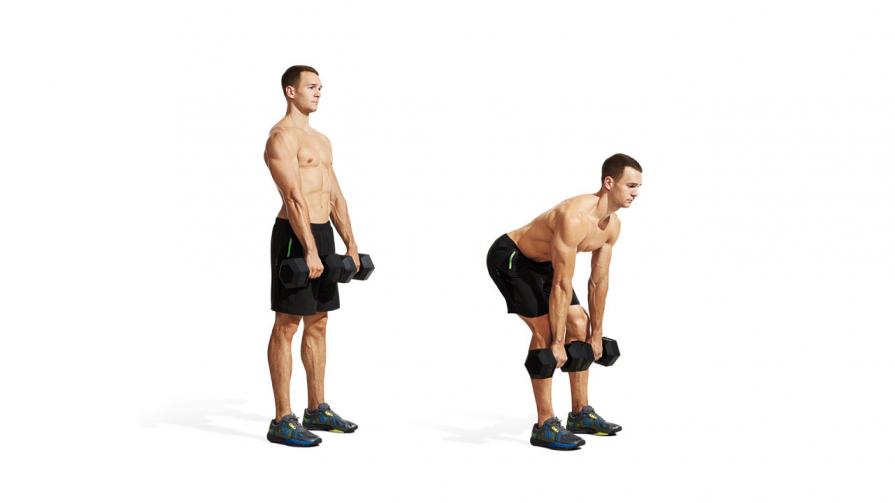
RDL’s are a great way to work the hamstrings and glutes while getting a hip hinge movement in your exercise routine. Here are the steps-by-step instructions from Very Well Fit:
- Stand tall with your feet roughly hip-distance apart. Hold a barbell in both hands directly in front of your thighs with your hands shoulder-distance apart (slightly wider than your thighs).
- Start with a very slight bend in your knees. Roll your shoulders back, drawing your shoulder blades toward your spine to engage your upper back. Your shoulders should remain pulled back like this throughout the exercise.
- Inhale and press your hips back. Continue pressing them back (like your hips are hinging), as your torso naturally begins to lean forward toward the floor. It’s important to realize you’re not tipping forward at the waist. The movement of your torso only happens as a result of your hips hinging, not because you’re actively leaning forward. Check to make sure you still have perfect posture and your shoulders and back aren’t rounding forward.
- Keep the barbell close to your thighs (almost grazing the front of them) as you hinge forward from the hips. If there are several inches between your body and the barbell, roll your shoulders back and pull the barbell closer to your body. Your arms should hang naturally down (elbows extended), but they should remain engaged to keep the barbell close to you.
- Stop hinging at your hips when you feel a stretch through your hamstrings. The barbell does not have to reach the floor—in fact, it’s perfectly fine if you stop the movement when the barbell reaches roughly knee-height, depending on your personal flexibility.
- Exhale and use your hamstrings and glutes to “pull” your torso back to standing as you actively press your hips forward. You should not use your back or core to pull yourself back to standing.
To see the Romanian Deadlift demonstrated please, click here.
Goblet Squat
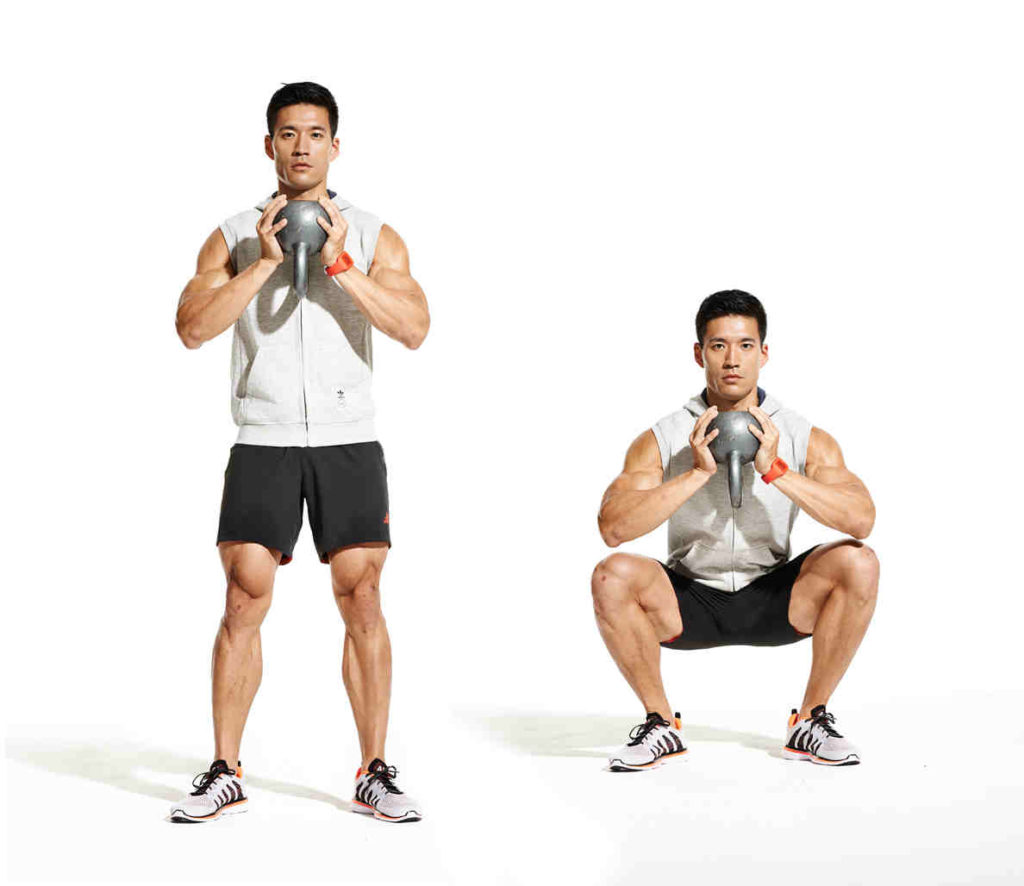
Squats are an essential component to a strength training program to build hamstring, quad, glute, and core strength. A goblet squat is just like any other squat, but the weight is placed in front of you. You can use a kettlebell, dumbbell, or even a household item (like a gallon jug) if you’re working out from home.
Here are the steps-by-step instructions from Very Well Fit:
- Stand with your feet slightly wider than hip-distance apart, your toes angled slightly outward.
- Hold a kettlebell in both hands at your chest, gripping the handles as though you were cupping a goblet—one hand on either side of the handles. Bend your elbows so the goblet is positioned right at the center of your chest.
- Warm-up by using a lighter (or no) kettlebell to get a sense of the movement. Then, progress to a heavier weight for your full set.
- Engage your core and look straight ahead—you want to keep your back neutrally aligned and your eyes facing straight ahead throughout the squat.
- Press your hips back and begin bending your knees to perform the squat. Inhale as you perform this downward phase.
- Keep the kettlebell close to your body during the movement.
- Focus on keeping your chest tall as you continue pressing your hips back and lowering down. The goal is to get your hips below parallel with your knees.
- Make sure your weight remains evenly distributed across your feet, or slightly more weighted toward your heels—you shouldn’t come up on your toes as you squat.
- Check your position at the bottom of the squat—your elbows should be positioned on the inside of either knee at the lowest point of the squat. This helps ensure that your knees remain aligned with your toes as you move into the deep squat position.
- Press through your heels and reverse the motion to return to the starting position. Exhale as you rise, and be sure to press your hips forward at the top of the squat to more fully engage your glutes.
Glute Bridge
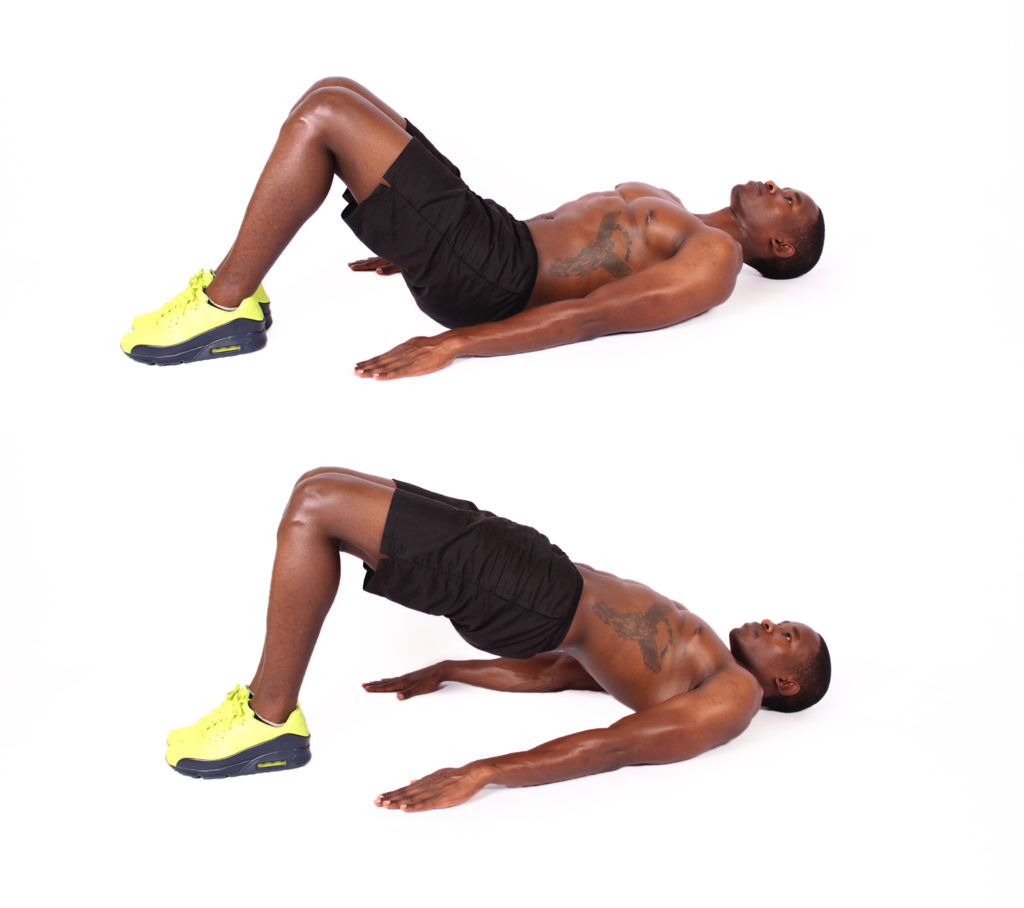
Exercising your glutes is key to improving low back pain, tight hips, knee pain, and more. The glute bridge is the most effective exercise for glute activation and growth. Here are the steps-by-step instructions from Very Well Fit:
- Lie on your back with your hands at your sides, knees bent, and feet flat on the floor under your knees.
- Tighten your abdominal and buttock muscles by pushing your low back into the ground before you push up.
- Raise your hips to create a straight line from your knees to shoulders.
- Squeeze your core and pull your belly button back toward your spine.
Physical activity recommendations
If you’re new to strength training, you should aim for 2-3 days a week. Remember to incorporate 2.5 hours of moderate aerobic exercise/week (biking, elliptical, brisk walk) and maintain an elevated heart rate the entire time. If you’re engaging in vigorous aerobic exercise, under 1.5-2 hours a week is considered adequate. Lastly, include daily walks for increased energy expenditure and boost in mood.
Remember to incorporate physical activity into your daily routine in this crazy pandemic environment. You’ll get a boost in energy, focus, memory, mental wellness, and improve your overall quality of life. For more information on exercise, memory improvement, and personal fitness training, click here.
References: BRINK, W. (2017). Resistance Exercise Reduces Cognitive Decline. Life Extension, 66–72.

Rachel Ellen Green is a NASM Certified Personal Trainer. She works at LoHi Athletic Club in Denver, CO. In addition, she conducts online strength training sessions. Her goal is to change her clients’ physical and mental health through exercise. Rachel focuses on retraining the body to create functional movement patterns and strength building. Rachel has a passion for fitness, nutrition, and helping others. Her background is in martial arts, gymnastics, kickboxing, and more. Rachel is currently pursuing her Exercise Science degree from Metropolitan State University, Denver.

Great article Rachel Green!